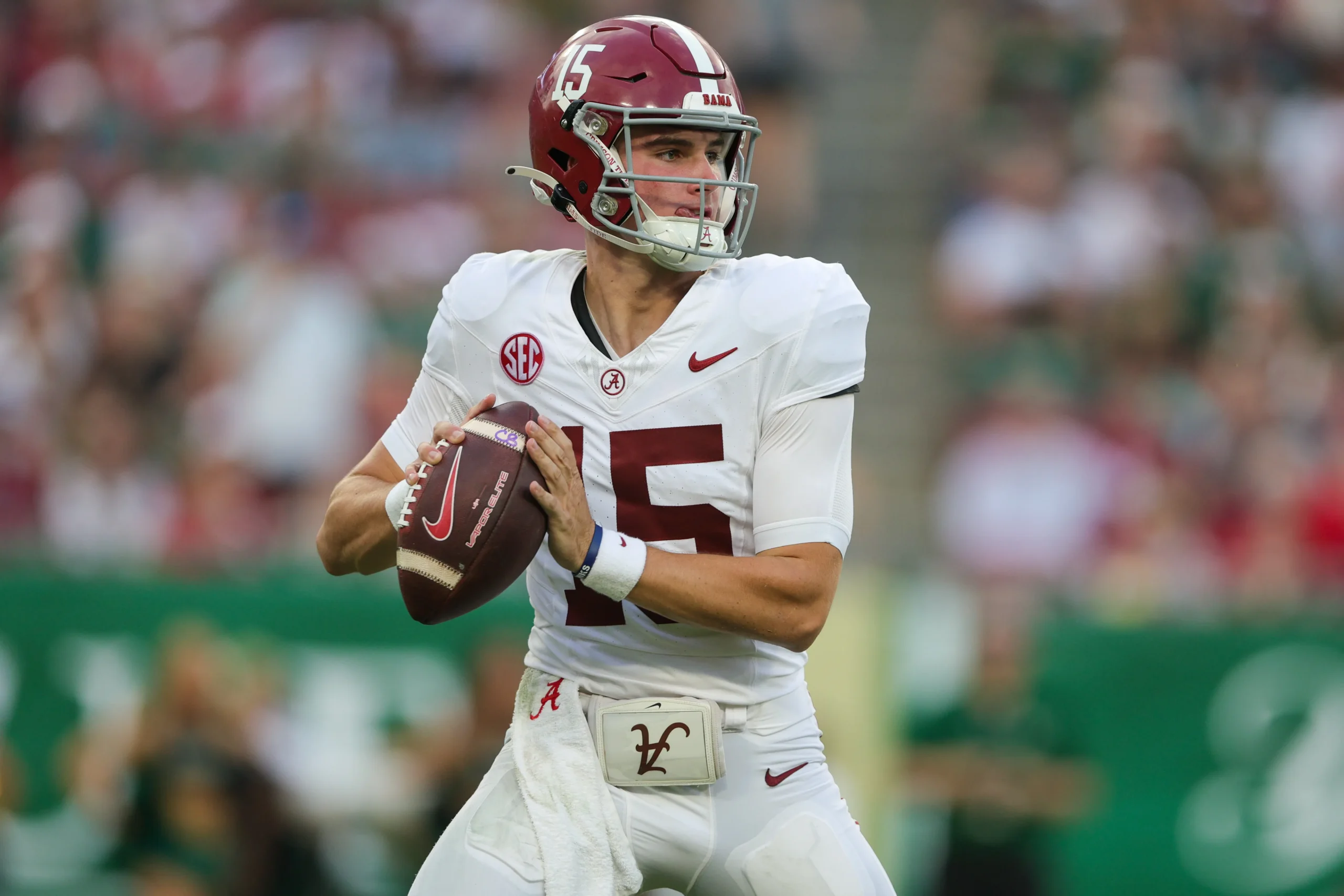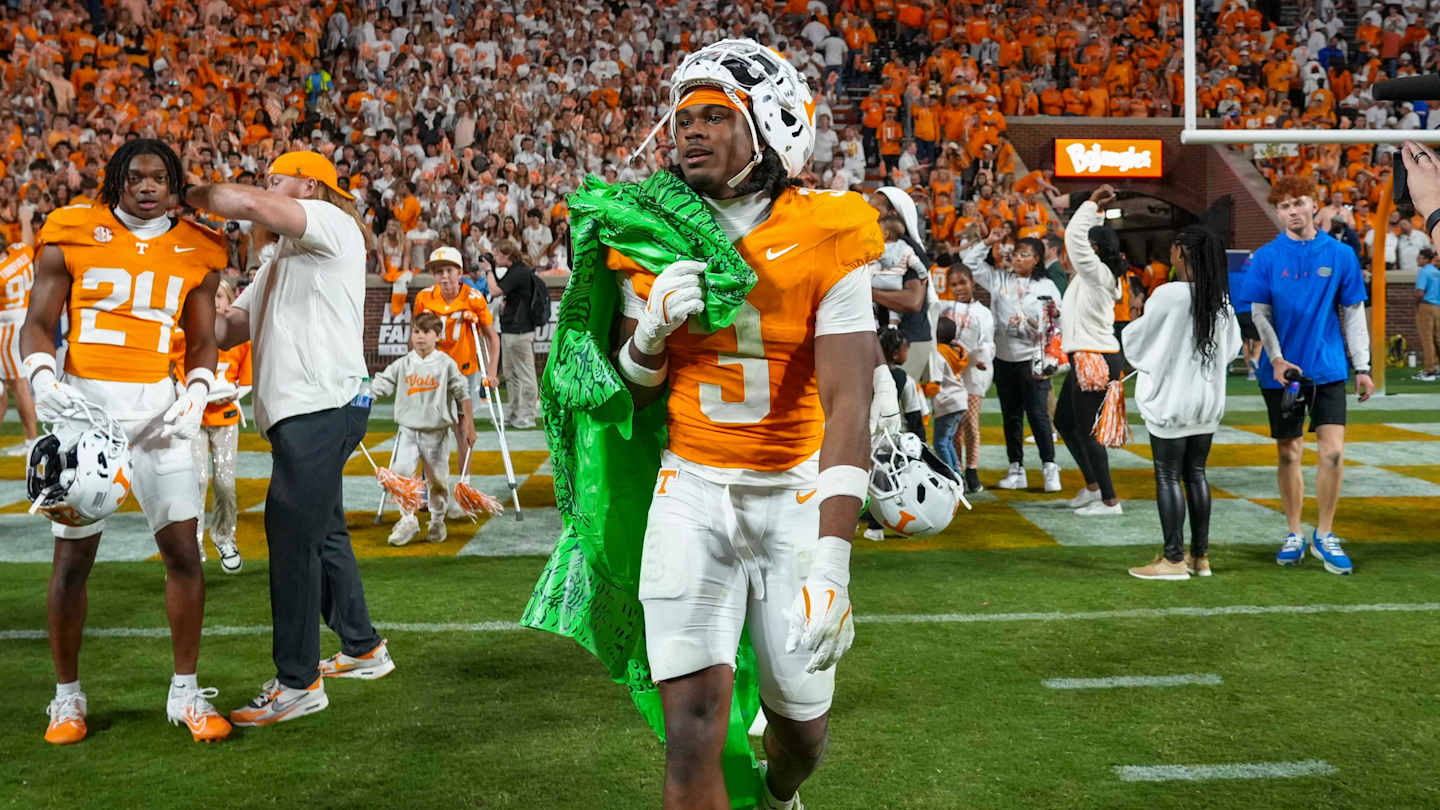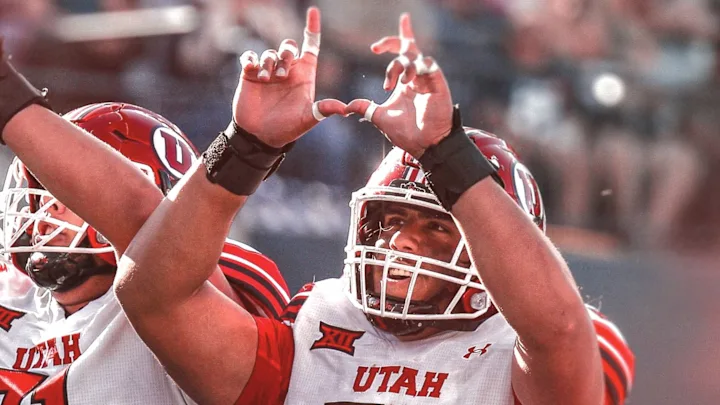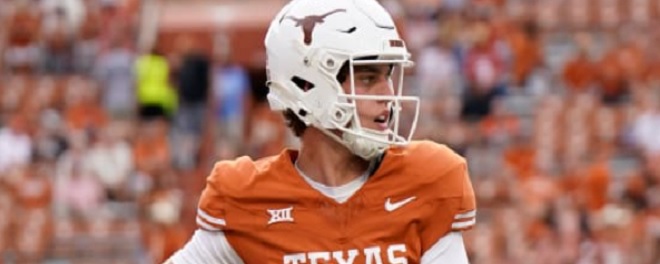By Charlie Campbell.
Send Charlie an e-mail here: [email protected]
Follow Charlie on Twitter @draftcampbell for updates.
This page was last updated March 31, 2016. Follow me @walterfootball for updates.
Position Review: Wide Receivers
Wide Receiver Class
Early-round talent: B+
Mid-round: B-
Late-round: B
Overall grade: B
2016 prospects vs 2015
Amari Cooper
Kevin White
DeVante Parker
Nelson Agholor
Laquon Treadwell
Will Fuller
Breshard Perriman
Phillip Dorsett
Corey Coleman
Josh Doctson
Devin Smith
Dorial Green-Beckham
Tyler Boyd
Braxton Miller
Michael Thomas
Sterling Shepard
I gave the 2014 wide receiver class the grade of A+ in the early rounds, while last year, I gave the earlyrounders an A-. Obviously, the 2016 class of receivers isn’t as talented as the last two years.
If you were to merge the two classes, there is a good amount of parity behind the top four receivers. Treadwell, Fuller, Coleman and Doctson are all about equal with Perriman and Dorsett as late first-round picks. The second group of wideouts from this year aren’t as talented as Devin Smith or Dorial Green-Beckham.
Safest Pick: Will Fuller, Notre Dame

I’m higher on Fuller than most, but in my opinion, he’s the best and safest wide receiver in the 2016 NFL Draft. Fuller is extremely fast while not being undersized. The 6-foot, 186-pounder can use his elite speed to achieve separation as he is just too fast for cornerbacks to maintain coverage. Fuller is a home-run hitter who racked up 29 touchdowns over the past two seasons. He also has drawn good reviews off the field from NFL teams. I think Fuller is a safe bet to be a quality starting wideout who stretches the field vertically and takes the top off a defense.
2015 Pick: Amari Cooper
2014 Pick: Sammy Watkins
2013 Pick: DeAndre Hopkins
Biggest Bust Potential: Corey Coleman, Baylor

This wasn’t an easy decision. I considered going with Laquon Treadwell because I think he will struggle to separate from NFL cornerbacks, but Treadwell makes up for it with size, strength, winning 50-50 passes, and blocking. I chose Coleman because I see some potential flaws in his game.
Coleman (5-10, 194) is a quick receiver, but he is not a burner like Fuller, Sammy Watkins, Odell Beckham Jr. or Philip Dorsett. Coleman doesn’t have that gear of speed. He also only ran four routes in college, so he needs a lot of development as a route-runner. On top of that, Coleman dropped a lot of passes over his career. At 5-foot-10, 194 pounds, he doesn’t have size to help him. Of the potential first- and second-round receivers, I think Coleman has the most bust potential.
2015 Pick: Devin Funchess
2014 Pick: Kelvin Benjamin
2013 Pick: Cordarrelle Patterson
Wide Receiver Rankings by Attributes
Separation:
NFL prototype: Calvin Johnson, Lions
- Will Fuller
- Corey Coleman
- Braxton Miller
- Sterling Shepard
- Michael Thomas
- Tyler Boyd
- Josh Doctson
- Laquon Treadwell
Recap: A few wide receivers coaches told me that the ability to separate from coverage is the first trait they looked for when scouting draft prospects. Fuller is the best in this draft class at getting space from defensive backs. He does it with vertical speed and suddenness out of his breaks. Fuller’s separation skills are NFL-ready.
Coleman and Miller aren’t as fast as Fuller, but they are quick and tough to cover in and out of breaks. Both are big-play receivers who can burn defensive backs vertically and get open running down the field, though Coleman could have issues with getting off jams at the line of scrimmage as pro.
Shepard was skilled at getting separation with his quickness, route-running and intelligence. He has a knack for getting open and generating some late separation.
Thomas consistently gained separation via quickness running vertical routes down the field, but he isn’t as sudden as the top four. Boyd is a polished wideout who has speed and suddenness out of his breaks. He is a Keenan Allen-type to get open in the short to intermediate part of the field.
The big question around Doctson and Treadwell is the ability to get separation from NFL defensive backs. Both can use their size and strength to get open late while making receptions over defenders. Neither has vertical speed, and they aren’t going to be sudden versus NFL cornerbacks. Both will have to win with their size and catching skills, similarly to Texans’ DeAndre Hopkins.
Hands:
NFL prototype: Larry Fitzgerald, Cardinals
- Laquon Treadwell
- Josh Doctson
- Sterling Shepard
- Michael Thomas
- Braxton Miller
- Tyler Boyd
- Corey Coleman
- Will Fuller
Recap: This is a nice crop of sure-handed receivers. Treadwell has the best hands in the 2016 NFL Draft as he snatches everything that comes his direction. He attacks the football and is very strong to control the ball. Doctson also has excellent hands. I like how he attacks the football and doesn’t wait for it to come to him.
Shepard is a smaller, slot receiver, and they can drop more passes than big receivers, but Shepard is very reliable. It was very rare to see him drop a pass. He tracks the ball well and reels it in. He also has shown the ability to make difficult clutch catches when the game is on the line.
Miller is interesting. He showed some natural hands coming over from quarterback, so in time, he could be very good here. He still needs some development in terms of catching with his hands and not body catching some passes.
Thomas and Boyd don’t have bad hands, but each one of them can be prone to have a stretch where they will drop a pass or two. They might go three games without a drop and then have a couple in the first half of a game.
Fuller and Coleman are virtually tied for the weakest hands. Both of them will drop passes. That can happen with speed receivers. Each one needs to improve on their hands in the NFL.
Deep Speed:
NFL prototype: Odell Beckham Jr., Giants
- Will Fuller
- Corey Coleman
- Sterling Shepard
- Michael Thomas
- Braxton Miller
- Tyler Boyd
- Josh Doctson
- Laquon Treadwell
Recap: There are a number of receivers in this group who have the ability to stretch the field vertically. Fuller is the most explosive receiver available and is a threat to burn double coverage on any route. He has the speed to beat double teams over the top and is a threat to score on any reception. Defenses have to account for him in the deep part of the field.
Coleman is a big-play threat as a well. He had a ton of success as a home-run hitter for the Bears, but NFL corners are a huge upgrade over the Big XII defenses. Coleman is dangerous while running go routes along the sideline, but doesn’t have elite speed. Shepard can stretch defenses and can be a problem running vertically. He has quickness and is elusive.
Thomas was a vertical threat for running go routes along the sideline. He can stretch the field more than he’s given credit for. Thomas can go up to make receptions over defensive backs even when the defenders have good coverage.
Miller has some suddenness and explosion to him. He just is very raw and needs a lot of work. Boyd showed more capacity as a deep threat in 2014 when Pittsburgh had more talent around him. Last year, he saw more safety help over the top. Boyd doesn’t play slow, but he’s more of a possession receiver than a deep threat.
Doctson and Treadwell aren’t vertical threats to take a top off a defense. What they do is use their size to make up for it and are good on back-shoulder or jump balls along the sideline. That being said, neither is going to toast NFL corners while running straight go routes down the field.
Route-Running:
NFL prototype: Julio Jones, Falcons
- Sterling Shepard
- Tyler Boyd
- Laquon Treadwell
- Will Fuller
- Josh Doctson
- Braxton Miller
- Michael Thomas
- Corey Coleman
Recap: Route-running is a critical part of gaining separation in the NFL. Receivers who become sloppy in their routes have a hard time getting open. Extra steps allow defensive backs to maintain coverage and allow more time to recover.
Shepard is a very good route-runner and the best in this draft class. He is sudden in and out of his breaks with quickness, and his route-running often produced separation from cornerbacks. Entering the NFL, Shepard’s route-running is his best trait.
Boyd and Treadwell did a nice job of getting open in the short to intermediate part of the field, even with defenses sending them extra attention. Boyd is a smooth route-runner who is good at running the slants, crosses and digs. Treadwell isn’t a burner, but he is good running in and out routes.
Fuller isn’t just a sprinter as he is a good route-runner who uses his along with suddenness to consistently get open. He is very tough for cornerbacks to cover.
Doctson is a good route-runner and has developed his craft. Miller and Thomas need development for the NFL in their route-running, but each one has potential for the next level. Both have the tools to get open.
Thomas and Coleman are last, but they are good at running the routes they were assigned. However, Thomas and Coleman ran basically the same routes all the time, so they are going to need development in running other routes in the NFL. Coleman especially needs time; he only ran four routes in college.
Yards After the Catch:
NFL prototype: Dez Bryant, Cowboys
- Laquon Treadwell
- Braxton Miller
- Tyler Boyd
- Sterling Shepard
- Corey Coleman
- Will Fuller
- Michael Thomas
- Josh Doctson
Recap: The ability to turn a short reception into a big gain can make a receiver elite. Among the eight receivers above, all of them have run-after-the-catch ability, and I wouldn’t say there is one that is bad it.
That being said, the top two are pretty special. Treadwell isn’t fast, but he is good after the catch as he can run through tackles and is tough to bring down. He was very good on wide receiver screens.
At the end of their careers, if we revisited these comparisons, it wouldn’t surprise me if Miller is among the best yards-after-the-catch wideouts during his time in the NFL. He can be electric in the open field. Miller has the speed and explosion to run by defenders while also having serious elusiveness.
Boyd flashes good run-after-the-catch skills as well. He can pick up additional yards on crosses and is a tough runner. Shepard is tough for defensive backs to chase down and bring down once he makes a catch. He is elusive and quick in the open field.
Coleman, Fuller and Thomas are solid after the catch. However, they are more straight-line, vertical receivers. When they burn coverage, they can take any reception the distance. All three should be dangerous in the NFL to break off big gains whenever they make a reception downfield, but they aren’t zig-zaggers through a defense.
Doctson is a physical runner who can pick up yards after making a reception, but his run-after-the-catch skills could be diminished by the speed of NFL defensive backs.
Red Zone:
NFL prototype: Calvin Johnson, Lions
- Laquon Treadwell
- Josh Doctson
- Michael Thomas
- Corey Coleman
- Sterling Shepard
- Will Fuller
- Tyler Boyd
- Braxton Miller
Recap: This was a tough category to rank because so many of the receivers were excellent point producers in college. That being said, Treadwell was tremendous in the red zone last year with his ability to make catches in traffic and leap over defenders. He is a phenomenal weapon on fade passes and should be able to contribute immediately in the NFL.
Doctson makes it safe for quarterbacks to throw high for him as it will either be a touchdown or an incompletion. Thomas is very similar to Doctson.
Coleman has a nose for the end zone as he totaled 20 touchdowns last year. He doesn’t have size but is adept at finding soft spots in the condensed part of the field. Shepard and Fuller are similar to him. Fuller’s scores came from further out, but in the red zone, both players’ quick separation skills make them viable options to stay on the field.
Boyd isn’t a physically imposing wideout, but he has size and strength to him. He fights for the ball and shouldn’t be bad in the red zone. Miller showed some red-zone skills at the Senior Bowl that weren’t visible during his one season as a wide receiver. Still, he needs development.
Contested Catches:
NFL prototype: A.J. Green, Bengals
- Laquon Treadwell
- Josh Doctson
- Michael Thomas
- Tyler Boyd
- Braxton Miller
- Sterling Shepard
- Will Fuller
- Corey Coleman
Recap: Throwing windows in the NFL are very small, and receivers have to be trusted to outbattle defensive backs for the ball. Lacking the ability to win contested catches results in more interceptions.
This was hard to rank because the top two are all excellent at going up and outfighting defensive backs for the ball. In terms of projecting the transition to the NFL, Treadwell is ranked first because he has a strong frame. Treadwell is superb at beating defensive backs for balls up for grabs.
So is Doctson, as he will “big time” a defensive back by snatching a pass right over him. Both Doctson and Thomas are tall, well-built receivers who will use those skills to beat defensive backs. This top trio should be very good on back-shoulder throws.
Boyd (6-1, 197) isn’t the biggest receiver, but he is feisty to win on 50-50 passes. He is physical and has enough height and leaping ability to make contested catches.
Miller flashed the ability at the Senior Bowl as he outfought defensive backs for the ball. He had some nastiness to him.
Shepard (5-10, 194) isn’t big, but he isn’t bad at contested catches. He fights for the ball and wins despite his size. Fuller and Coleman are similar. Fuller (6-0, 186) projects to being better because he has more height than Coleman (5-10, 194).
NFL Picks - Dec. 21
NFL Power Rankings - Dec. 17
2026 NFL Mock Draft - Dec. 17
Fantasy Football Rankings - Sept. 1




